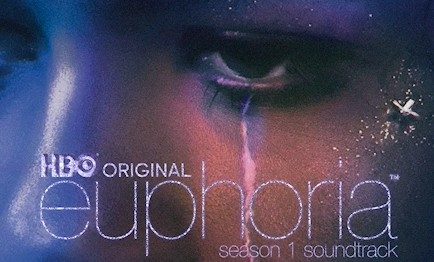A successful sync can be defined as one that aligns seamlessly with the visual energy of a scene while also amplifying the emotions inherent in the story. Beyond securing a good licensing fee, an effective sync has the potential to significantly boost the streaming numbers of the licensed track. This has been demonstrated time and again, with a notable example being Nirvana’s “Something in the Way,” which was featured in Batman. Following its sync, the song experienced a spike in streams and made its debut on the Billboard charts for the first time. The track was strategically used twice in the film and also appeared in the trailer.
Why is it important to pay attention to these spikes in numbers after a sync? A look at the IFPI Global Music Report 2022 reveals that “Synchronization Revenue—the use of recorded music in advertising, film, games, and TV—climbed by 22.0% (US$549.1 million) in 2021,” while “Streaming continued to grow strongly in 2021, up by 24.3% to US$16.9 billion (a rise of five percentage points on the prior year’s growth rate of 19.1%).” Streaming accounted for 65.0% of total global recorded music revenues, making it the leading revenue format in nearly all markets. As streaming continues to grow, particularly in regions like Africa, it’s clear that one of the key benefits of a successful sync is the spike in streaming numbers, which in turn allows artists and labels to profit from streaming revenue and enables publishers and writers to benefit from mechanical and performance rights revenue.
TikTok is currently one of the most powerful platforms for driving measurable spikes in listenership following a song’s sync to video content. However, the Euphoria teen drama series has shown that TV series can also be highly effective in boosting the listenership of licensed tracks. According to Billboard, songs featured in Euphoria saw streaming increases of up to 2,316%, and Shazam searches increased by 10,000%. What could be driving this success? Here are three key factors that contributed to the success of the licensed music used in the series.
- The weekly release of episodes, rather than releasing the entire series at once, allows viewers to recall the music used in previous episodes.
Richard Davis, in his book Complete Guide to Film Scoring, notes that film producers are often very intentional about the last piece of music heard in a film, as it tends to stick in people’s minds and can motivate them to purchase the soundtrack album (or stream the song in the current era). This theory is particularly relevant for songs that resonate on a personal level with the audience, as seen with the final track in the Euphoria series titled “I’m Tired,” which continues through the end credits.

Tunefind contains an index of music and songs appearing in popular television shows and movies and for about five weeks in a row, Euphoria features the most popular song on the platform; This shows the weekly strategy was indeed a great move that yielded results. What’s the status of weekly releases for African Content? For SVOD platforms we tend to have just a few TV series that use the weekly release model, for example The Real Housewives of Lagos showing on Showmax.
Tunefind, a platform that indexes music and songs from popular television shows and movies, showed that for five consecutive weeks, Euphoria featured the most popular song on the platform. This demonstrates that the weekly release strategy was indeed a smart move that paid off. What about the status of weekly releases for African content? On SVOD platforms, there are only a few series that follow this model, such as The Real Housewives of Lagos on Showmax.
- The role of TikTok in music discovery cannot be overstated.
One of the most common phrases used to describe music discovery today is “I heard it on TikTok” or “that song from TikTok where people are…”. As of the time of writing this article, “Gentility” by Melvitto featuring Wande Coal is experiencing a spike in streams despite being released three years ago, thanks to its popularity on TikTok. This isn’t the first time this has happened; Ckay’s “Love Nwantiti” also saw a similar spike in listenership after being synced to visuals on TikTok. A well-placed sync can do more than just help people discover a song—it can drive a significant increase in listenership. A closer look at the music licensed in Euphoria shows a diverse range of tracks, from songs released as far back as 1969 to more recent music. As the saying goes, “Streaming makes catalog records new again.” The impact of the Euphoria series on licensed music is evident when searching for most of the songs used in the show—many of the comments reference Euphoria. Just as TikTok has revived older tracks, syncs also have the power to resurrect past catalog records, giving them new life.

- Content is king, but context is queen.
Unlike music videos, where music takes center stage, music in film usually plays a background role, receding when sound or dialogue takes over. Therefore, the context in which music is used is crucial to its success in driving a spike in streaming numbers. In the Euphoria series, music is used in ways that make it memorable for the audience after watching an episode. Key examples include Rue and her family members singing along to 2Pac’s “Hit Em Up” as diegetic sound, characters lip-syncing during a workout session, songs used to build tension in the audience’s mind while the lyrics hint at what might—or might not—happen next, and the lead character, Rue, talking about listening to a song when prompted to share a memory that had an impact on her last summer. These and other notable moments demonstrate why music licensed in the series has seen such impressive spikes in streaming numbers.
It’s easy to focus on the financial aspects of music licensing, but context remains crucial. Remarkable moments are not easily forgotten. Moments like Davido’s performance of “Assurance” in Coming 2 America, Loren Allred’s “Never Enough” in The Greatest Showman, “Bella Ciao” in Money Heist, Celine Dion’s “My Heart Will Go On” in Titanic, and the cover of “Can’t Help Falling in Love” in Crazy Rich Asians are all examples of how the right sync, in the right context, can leave a lasting impact.



